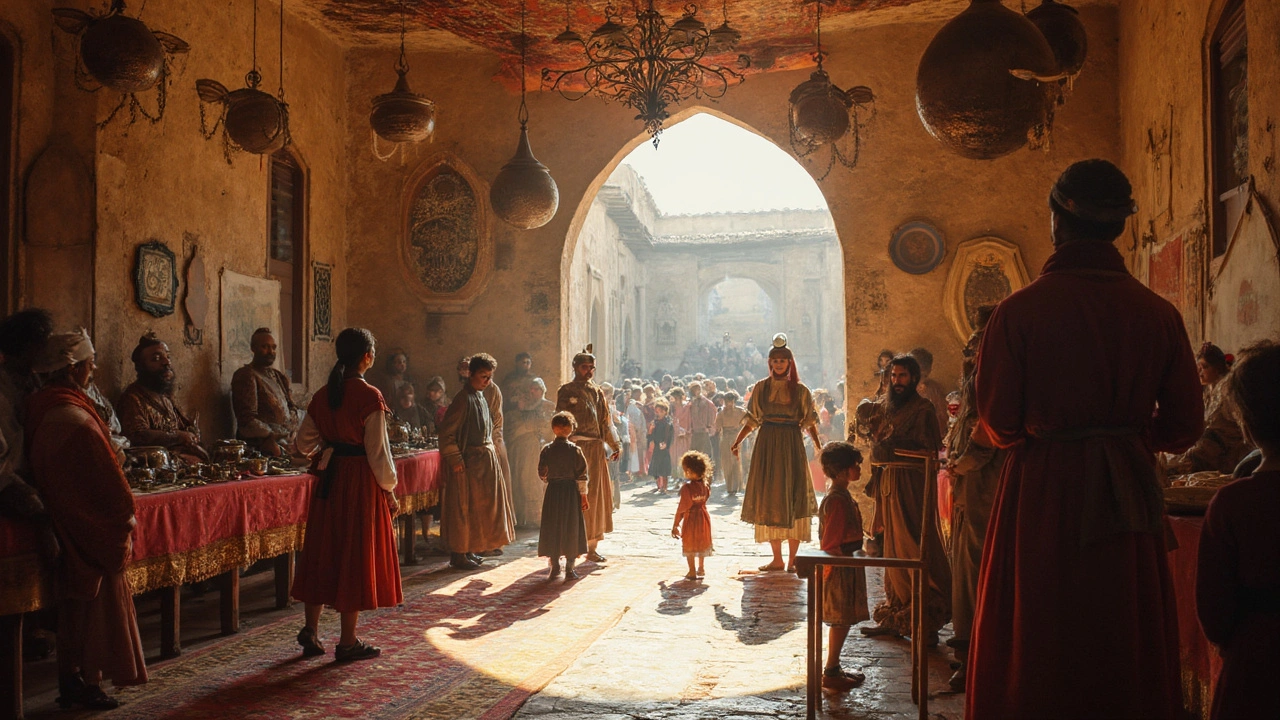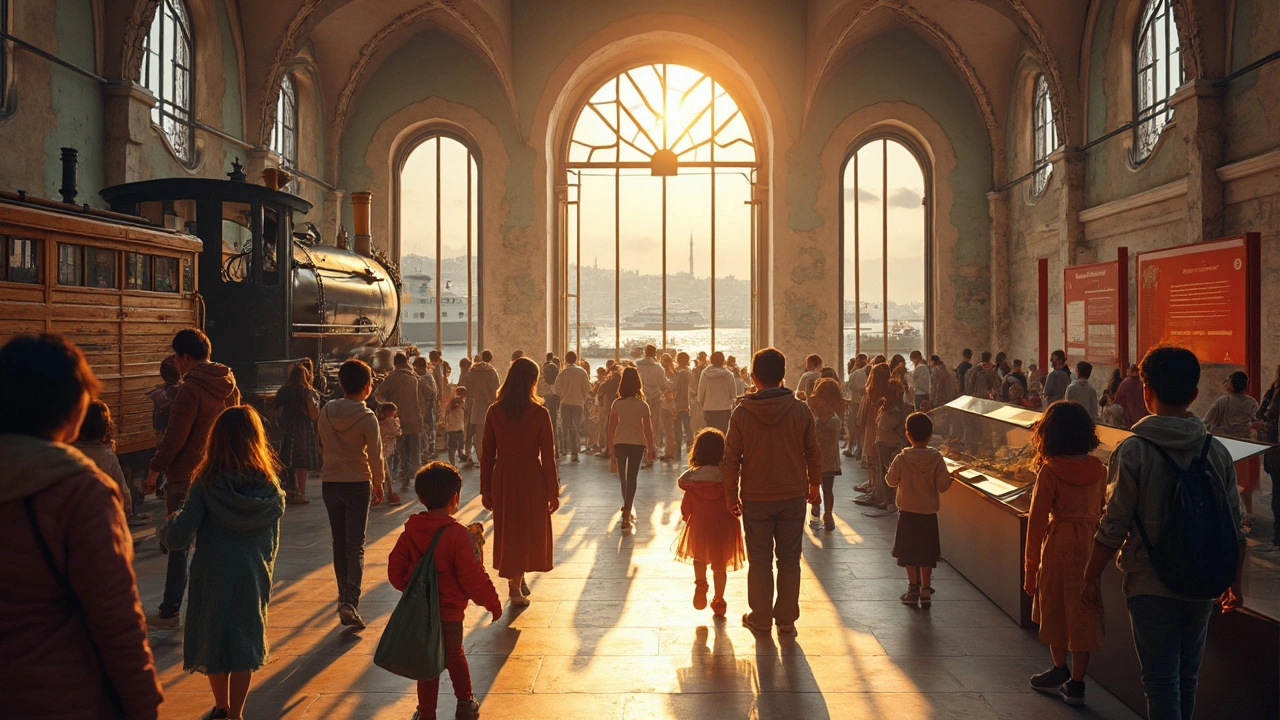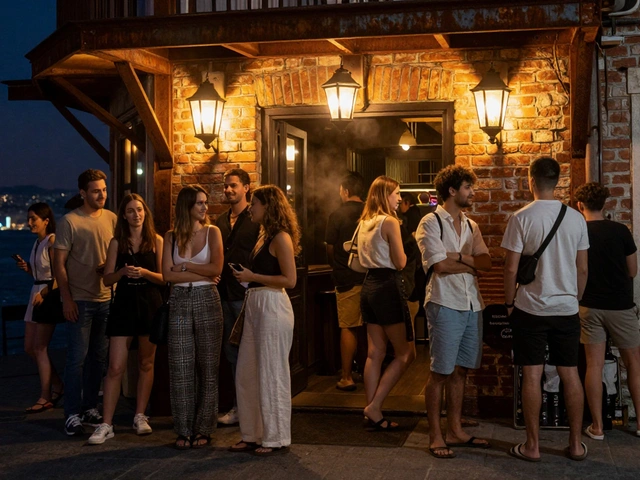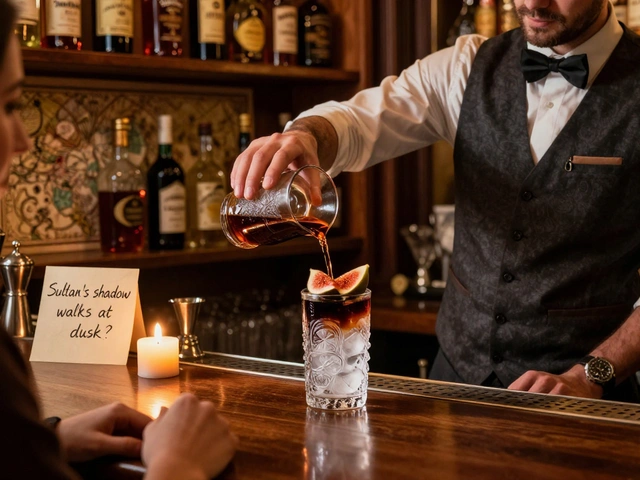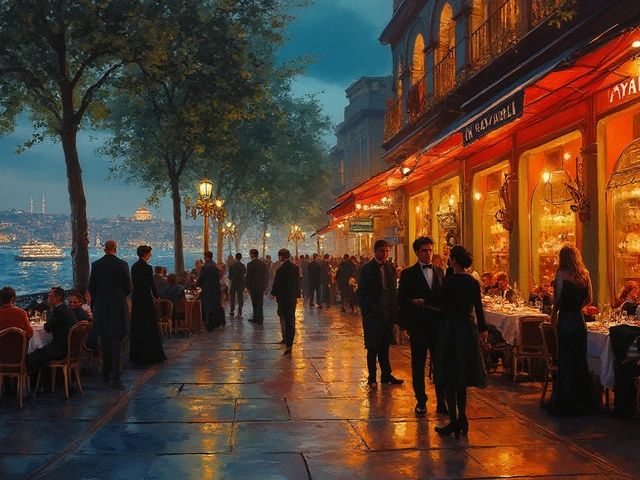Feel like just looking at dusty old artifacts doesn’t cut it anymore? Museums with historical reenactments flip the script—turning visitors from passive spectators to part of the action. You don’t just see the past; you step into it. Ever wondered what it’s like to watch blacksmiths hammer hot metal, or chat with a “soldier” marching across a Civil War field? These museums make that possible.
Here’s what sets these places apart. Actors in period costumes perform daily tasks, answer your questions, and sometimes even rope you into helping churn butter or fire a cannon (don’t worry, it’s safe and very supervised). The whole experience is hands-on and different every time you go. You get stories, smells, noise, and sometimes surprise flour on your shoes—real life, not just history behind glass.
Picking the right museum comes down to what you’re into. Some focus on specific eras—think Colonial Williamsburg for early America, or the Jorvik Viking Centre if giant beards and longboats are your thing. Others switch themes with the seasons, so a spring visit feels totally different from winter. Keep reading for the top picks and insider tips to make your time-travel museum trip unforgettable.
- Key Museums with Reenactments
- Why Historical Reenactments Matter
- Tips for Planning Your Visit
- What to Expect at These Museums
- Frequently Asked Questions
Key Museums with Reenactments
If you’re after the real deal when it comes to popular museums with historical reenactments, there are a few places you’ve got to know about. They don’t just show you the past—you see, hear, and actually feel it. Here are some of the top spots for living history that earn rave reviews:
- Colonial Williamsburg (Virginia, USA): This is a classic. The whole town is basically a working time machine. You’ll bump into blacksmiths, bakers, British soldiers, and American revolutionaries—literally on the street. The best part? They’ll talk to you in character about the "current" news of 1775.
- Plimoth Patuxet Museums (Massachusetts, USA): Want to meet real Pilgrims and Native Wampanoag people? This museum lets you get hands-on with colonial chores and join in seasonal activities. The actors don’t break character, even if you ask about cell service.
- Jorvik Viking Centre (York, England): Swing by here and find yourself smack in the middle of a Viking-age street, complete with smells and sounds. Animatronics, live actors, and replica markets give you the full 9th-century York experience. Just don’t expect Wi-Fi.
- Fort Ticonderoga (New York, USA): This site switches up its story each year—sometimes you’re a British redcoat, sometimes a French marine. They fire real cannons (blanks, obviously) and march real troops around. The daily schedule is posted in advance, so you can time your trip to see the good stuff.
- St. Fagans National Museum of History (Wales): It’s a full village spread across 100 acres, with costumed actors showing off traditional crafts, farming, and music. Try your hand at weaving or see a medieval bakery up close. Great for curious kids and adults who remember loving field trips.
These top living history museums pull in crowds for a reason—you leave with stories, not just snapshots. If you're looking for interactive exhibits, Colonial Williamsburg alone gets over 500,000 visitors a year, proving families can’t get enough of this stuff.
| Museum | Main Era | Location | Specialty |
|---|---|---|---|
| Colonial Williamsburg | 18th Century | Virginia, USA | Colonial America immersion |
| Plimoth Patuxet | 17th Century | Massachusetts, USA | Pilgrim & Native history |
| Jorvik Viking Centre | 9th Century | York, England | Viking lifeways |
| Fort Ticonderoga | 18th Century | New York, USA | Military reenactments |
| St. Fagans | Medieval–Modern | Wales, UK | Welsh village life |
A quick tip: Check the museum schedules before planning. Reenactments aren’t always daily, and big events can sell out fast. Some even offer overnight programs or behind-the-scenes tours if you book ahead. These experiences fill up especially during summer and holidays—so don’t just show up and hope for the best.
Why Historical Reenactments Matter
Ever noticed how hard it can be to actually picture life hundreds of years ago? Historical reenactments at popular museums fix that. Instead of reading about how people baked bread in the 1700s, you can smell the bread, chat with the baker, and watch the whole process right in front of you. It’s a game changer for learning and remembering.
What’s cool is that our brains take in facts differently when we experience them firsthand. According to a National Endowment for the Humanities report, people retain around 60% more information from interactive experiences than from reading signs or looking at objects behind glass. Engaging all your senses boosts your memory and makes stories stick with you long after you leave.
Reenactment museums also make history more real for kids—and let’s be honest, most adults too. Instead of another boring field trip, students can be “drafted” into the Continental Army or help solve a mystery in medieval England. Suddenly, the names and dates in textbooks mean something because you’re living the story, not just memorizing it for a test.
Plus, it’s not just about fun. These living history sites give voices to groups often left out of traditional museum narratives. At Colonial Williamsburg, for example, interpreters dig into the stories of enslaved people, women, and tradespeople—not just the famous Founding Fathers. Museums with reenactments can spark important conversations you won’t get by reading a plaque.
Thinking of planning a visit? Here’s why you shouldn’t skip the next historical performance:
- You learn way more by doing and asking questions on the spot.
- You see tech and tools from the past actually work—like printing presses, muskets, or spinning wheels.
- You get a sense of the sights, sounds, and even the odd smells that textbooks just can’t describe.
- It’s usually way more fun than staring at exhibits.
If you care about sharing real history with your friends, your kids, or just getting more out of your travels, museums with interactive exhibits make all the difference.

Tips for Planning Your Visit
There’s no fun in traveling back in time just to get caught up in modern-day hassles. If you’re heading to popular museums that feature historical reenactments, a little prep goes a long way. Let’s get straight to the point so you can actually enjoy your day, not just survive it.
- Book early—like, seriously early. Museums like Colonial Williamsburg and Plimoth Patuxet Museums can sell out weeks ahead, especially during school holidays or big reenactment weekends. Grab tickets online before you even hit the road.
- Check the schedule. Don’t assume every reenactment runs daily! For example, Gettysburg’s big battle reenactments and certain living history days only happen on select weekends. Hit up the museum’s website calendar to plan around these highlights.
- Dress for the outdoors. Many of these experiences sprawl outdoors regardless of the weather. Places like Jamestown Settlement and Old Sturbridge Village keep you moving from field to barn to fort, so comfortable shoes and a light rain jacket are lifesavers.
- Arrive early, stay late. Crowds, especially on weekends, can be wild after noon. Get there right when doors open. You’ll dodge long lines and maybe get a jump on hands-on demos before things get mobbed.
- Scope out food options. All those wandering and talking will make you hungry. Some museums serve historic eats—think Colonial bread at Greenfield Village—while others only offer basic snacks, or let you picnic. It never hurts to pack something just in case.
- Take advantage of interactive stuff. Don’t be shy about jumping into mock drills or workshops. Actors are there to help you get involved. Whether you’re spinning wool or learning musket drills, memories are made by joining in.
- Bring a portable charger. You’ll want your phone for photos and digital maps, but don’t expect reliable charging stations. Many historic sites have patchy outlets at best.
- Plan for kids—yours or your friend’s. Many living history museums offer scavenger hunts or child-focused activities. Ask about these when you check in; they keep everyone happy longer than you’d think.
Here’s a snapshot of peak season vs. off-peak crowd levels for some major US reenactment museums. Use this to dodge the biggest crowds:
| Museum | Peak Attendance | Best Off-Peak Months |
|---|---|---|
| Colonial Williamsburg | July, August | October, March |
| Gettysburg National Military Park | Summer, Gettysburg Weekends | Early May, Late September |
| Plimoth Patuxet | Thanksgiving, June | April, November (before holiday week) |
One last thing: check for discounts. AAA, student, and teacher rates are common, and some places offer combo passes with other local attractions. When in doubt, ask—the savings can be real.
What to Expect at These Museums
Walking into popular museums with historical reenactments feels more like stepping onto a movie set than your average museum visit. You might be greeted by a blacksmith pounding away in a smoky forge or a baker dishing out samples straight from an 18th-century oven. The whole place is alive with costumed staff, lively chatter, and real tasks being done exactly as they would have been hundreds of years ago.
Unlike traditional museums where you just look and read, here you get a front-row seat to daily life in the past. For example, at Colonial Williamsburg in Virginia, you’ll see horse-drawn carriages rumbling down dirt roads and kids trying on tri-corner hats. The staff never break character, so every question you ask is answered as if it’s 1774, not 2025. Places like Plimoth Patuxet Museums in Massachusetts get even younger visitors hands-on with crops, crafts, and games straight from the 1600s. European spots like the Jorvik Viking Centre in York, England, go all out with actors, realistic smells, and even reconstructed Viking streets.
Expect different reenactments throughout the day. Some museums post daily schedules near the entrance, so it’s smart to plan ahead. Here’s what shows up on a typical reenactment day at Colonial Williamsburg:
| Time | Event |
|---|---|
| 10:00 AM | Blacksmith Demo |
| 11:30 AM | Revolutionary War Drills |
| 1:00 PM | Dye-Making Workshop |
| 3:00 PM | Tavern Music & Dancing |
If you like being hands-on, ask about workshops. Some living history museums let you try candle-dipping or print your own newspaper on a wooden press. Others encourage kids and adults alike to help out with daily chores, like milking cows or sewing flags. It’s not just for kids—adult visitors are often surprised at how much fun it is to join in. Maeve and I once ended up helping to churn butter at Old Sturbridge Village in Massachusetts, and that weirdly ended up being one of the highlights of our whole trip.
Expect crowds during summer, school vacations, and big seasonal events (think Civil War days or Viking festivals). If you want the best interactions with reenactors, try visiting during the week or right when the museum opens. Wear comfortable shoes—these museums often cover big areas and you’ll be on your feet a lot.
- Check daily reenactment schedules at the entrance.
- Ask staff about hands-on activities—don’t be shy!
- Bring a water bottle and a snack—many museums have old-style taverns or cafes, but lines get long.
- Let kids dress up if they want—lots of places sell simple costumes for an extra immersive day.
Visiting a museum with reenactments isn’t just a day out—it’s an experience that sticks with you. You’ll walk away understanding history in a totally new way, with cool stories to tell that no regular exhibit can top.

Frequently Asked Questions
Curious about what visiting popular museums with historical reenactments is really like? Here’s the nitty-gritty so you can skip the guesswork.
Do I have to dress up to join a reenactment?
Not at all. Most museums supply the costumes for their actors and volunteers. Visitors are usually just spectators, but some spots (like Plimoth Patuxet Museums in Massachusetts) offer the chance to wear a hat or apron if you’re game. If you want to be part of the action, check the museum’s website—they might offer special immersive experiences you can sign up for.
How much time should I allow for a visit?
Plan on spending two to three hours at bigger living history museums. Spots like Colonial Williamsburg or Conner Prairie have enough to fill an entire day, especially with all the live demos and hands-on stuff. Smaller museums might only need an hour or two. Check their schedule for the day’s reenactments so you don’t miss the big ones.
Are these places good for kids?
Absolutely. Most living history museums go out of their way to be family-friendly. Kids can try activities like candle making, outdoor games, or even help feed farm animals. Some museums have special programs just for school groups or families on weekends.
Is it expensive to visit?
Ticket prices can vary a lot depending on location, time of year, and extra activities. Here’s a quick look at general pricing:
| Museum | Adult Ticket | Kid Ticket | Extras |
|---|---|---|---|
| Colonial Williamsburg | $46.99 | $26.99 | Guided tours, workshops |
| Jorvik Viking Centre | £15.00 | £10.50 | VR experience |
| Plimoth Patuxet | $32.00 | $19.00 | Craft demos |
It’s smart to book online—sometimes you’ll snag a discount, and you can skip the long lines at the door.
How interactive are these reenactments?
You can get as involved as you want. Some museums are very hands-on, letting you ask lots of questions or even join in the action. Others keep things more observation-based—you watch actors do their thing while you move through the exhibit. Check museum reviews if full-blown interaction is your priority.
Are historical reenactments always scheduled?
Most museums have set times for big reenactments, like battle scenes or town meetings. Smaller demos (like weaving or baking) might run all day and repeat often. Best move: check the daily program on the museum’s website before you go.
Is accessibility an issue?
Many modern living history museums do a solid job with ramps, accessible restrooms, and helpful staff. If you or someone in your group uses a wheelchair or stroller, look for an accessibility page on the museum’s site. Places with old buildings or gravel paths might be trickier, but most are working to improve access every year.
Anything else you’re wondering about that’s not listed here? Most museum websites offer detailed FAQs, so take a peek before heading out. The goal is to make your visit fun, memorable, and as smooth as possible.
